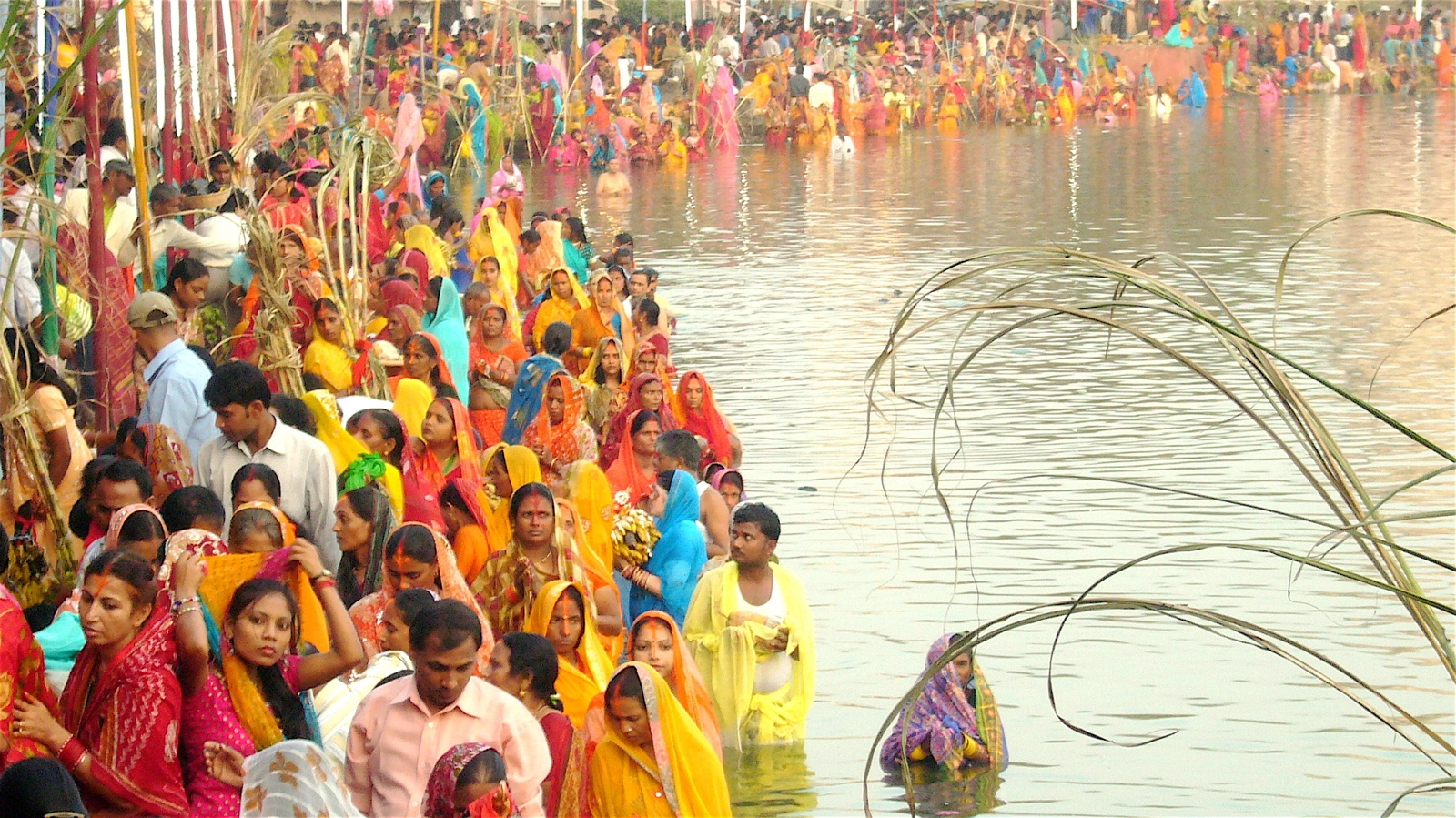
Chhath Puja, a festival of sun worship, has deep roots in Bihar’s culture. It celebrates the Sun God and fosters a strong connection to the land and people of Bihar. The festival has spread across the world, uniting Biharis wherever they live. It is not just a religious ritual; it’s a festival that links the diaspora with their heritage.
The Meaning Behind Chhath Puja
Dr. Ashish’s article delves into the essence of Chhath Puja, describing it as more than a simple festival. It’s a comprehensive practice of purification. Chhath lasts for four days, with each day marked by specific rituals that emphasize physical, mental, and spiritual cleanliness. The festival’s focus is on worshipping the Sun God, whose light and energy sustain life on Earth.
Chhath is also tied to ancient traditions and texts. Its roots go back to the Rigveda, and it is believed that Draupadi and the Pandavas performed this ritual to regain their lost kingdom. The festival is celebrated twice a year, during Chaitra and Kartik months, with the Kartik festival being the most widely observed. The rituals of Chhath Puja are designed to absorb positive energy from the Sun’s rays, with particular importance placed on the connection between the worshipper and nature.
Chhath Puja Rituals
Chhath Puja follows a strict four-day observance. On the first day, Nahai Khai, the house is cleaned and the devotees (called Vratis) prepare for fasting by eating pure vegetarian food. This food, usually pumpkin dal and rice, is consumed in a sacred manner.
The second day is called Lohanda and Kharna. After fasting throughout the day, the Vratis eat a special meal in the evening. They prepare and share rice kheer made with sugarcane juice, rice pitha, and ghee-coated roti. Afterward, the Vratis begin their 36-hour Nirjala fast.
The third day, Sandhya Arghya, is marked by the preparation of Prasad, such as Thekua, Ladua, and fruits. In the evening, the Vratis go to a nearby river or pond, offering prayers and Arghya (water and milk) to the setting Sun. The scene is one of communal unity, with devotees coming together to perform the ritual.
On the fourth day, Morning Arghya, the Vratis return to the same location at sunrise to offer their final prayers to the rising Sun. This concludes the fast, which ends with a simple ritual at home where devotees drink raw milk syrup and consume Prasad.
Chhath Puja Expands Globally
Though it started in Bihar, Chhath Puja has become a global festival. Biharis around the world, in places like Delhi, Mumbai, Mauritius, and even the US and Canada, observe this sacred tradition. What started as a regional festival has grown to unite the Bihari diaspora. It is no longer limited to one community or religion; many people from different faiths take part in the celebrations.
An Egalitarian Tradition
One unique aspect of Chhath Puja is that it is completely egalitarian. Unlike many other Hindu festivals, there is no need for a priest. Every participant is equal in the ritual, offering Arghya together. No one is given preference in the order of offerings. This sense of equality is further emphasized in the way offerings are made. While many festivals require expensive fruits and decorations, Chhath Puja uses simple, locally available items like lemon, amla, and guava. These humble offerings reflect the core of the festival: devotion over extravagance.
Moreover, Chhath Puja highlights community involvement. People who make the necessary offerings, like bamboo baskets and soup containers, are also valued as integral parts of the tradition. Devotees must prepare the Prasad themselves, making it clear that the festival is about personal effort and devotion, not commercialized celebrations.
Chhath Puja’s Relevance Today
The Chhath Puja festival holds deep meaning, especially for Biharis living far from home. Despite the distance, Chhath connects them to their roots. It is a time when even those who have lived abroad for years feel a strong pull to return home. For many, securing leave from work months in advance and planning travel for the occasion is a priority.
This festival represents much more than just a religious event. It is an emotional anchor, reminding participants of their homeland, family, and traditions. It’s a festival that stresses gratitude for life, community, and the environment. Whether in the small towns of Bihar or in the bustling cities of the world, Chhath Puja brings people together, offering a sense of belonging, unity, and hope.
Chhath Puja is not just about worship; it’s about keeping the cultural fabric alive. It celebrates the equality of men and women, the importance of nature, and the bond between humans and their surroundings. It remains a vital part of the identity for Biharis, both at home and abroad, and will continue to unite people for generations to come.
Also Read: Delhi High Court Bars Chhath Puja At Yamuna Banks Due To High Pollution Levels
Written By: Dr Kumar Ashish
Dr Kumar Ashish is a 2012-batch Bihar cadre IPS officer known for his innovative approach to community policing. Serving as the SP of East Champaran, he has launched several successful initiatives like ‘Coffee with SP’ and ‘Pink-Patrolling,’ Dr. Ashish has a PhD in French from Jawaharlal Nehru University and is also a published author on social issues.
To read more such news, download Bharat Express news apps


















